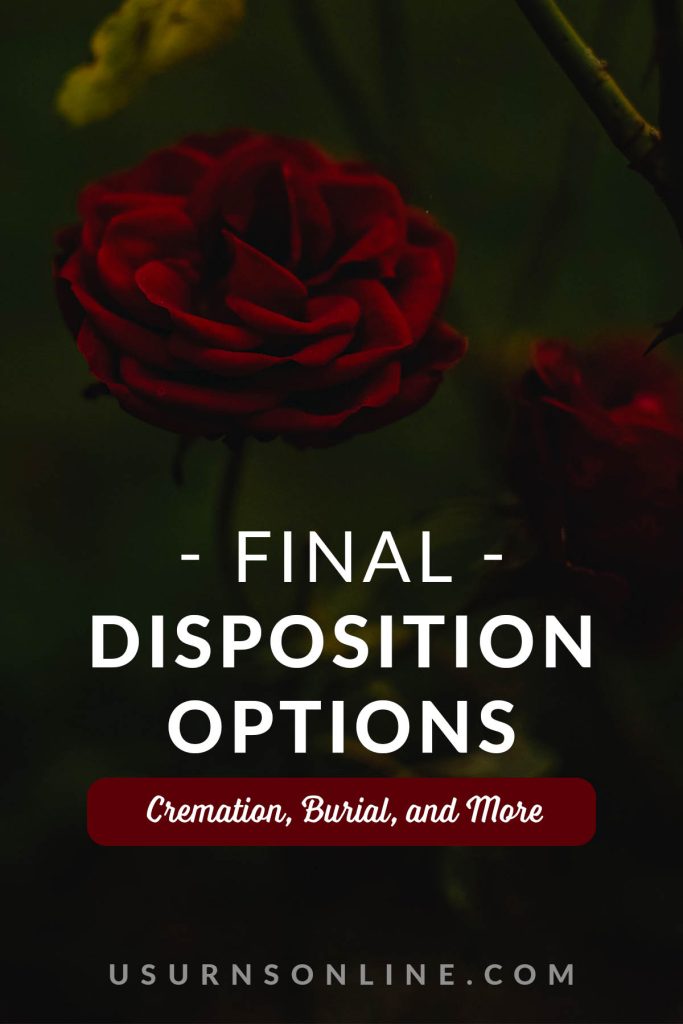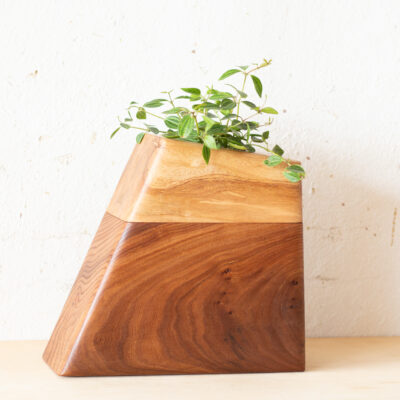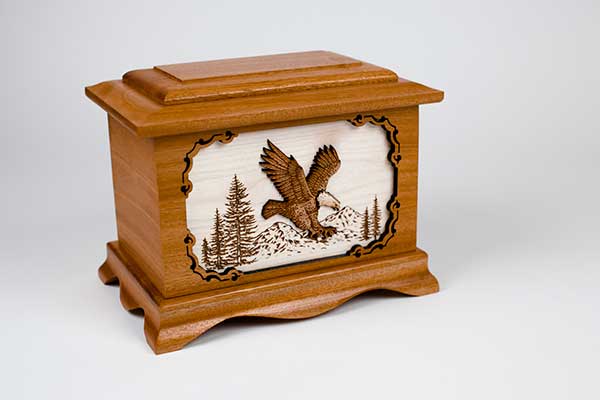Final disposition is what happens to a body after death. What are your options for burial? For cremation? And what alternatives are available?
Planning ahead and making your final arrangements in advance is a great idea. This will save your loved ones from tons of stress, and it will probably save them money as well.
The first decision you’ll face in thinking about your funeral arrangements is the question of what to do with your body.
Here are the most typical final disposition options:
- Burial Options:
- Ground burial at a cemetery
- Above-ground burial in a mausoleum
- Entombment in a lawn crypt
- Natural burial
- Cremation with burial of ashes
- Cremation Options:
- Above-ground burial in a columbarium
- Scattering of ashes
- Urn kept at home
- Direct cremation
- Burial Alternatives:
- Alkaline hydrolysis
- Burial or scattering at sea
- Body preservation
- Even More Disposition Methods
Our website is supported by our users. We sometimes earn a commission when you click through the affiliate links on our website. See our privacy policy & disclosures for more information.
What Is Final Disposition?
Final disposition is a legal term that refers to what happens to your body when you die. This could mean burial, cremation, interment, or another method of “disposing” of a deceased individual’s remains.
In this article, we are going to discuss burial, cremation, and alternative body disposition methods.
Final Disposition Options
Burial Options
1. Ground Burial at a Cemetery
This is the classic “traditional” disposition option. The body remains intact, is placed in a casket, and may or may not be embalmed. You can hold a funeral or memorial service, then bury the body in a cemetery or on your own private property.
Note: There may be local or state laws that regulate burial on private property. This option is becoming very rare due to the restrictions in many states or counties. For example, Oregon, where we are, burial on private property is permitted so long as certain conditions are met. These conditions include the requirements that you must maintain accurate and permanent records of the burial, and you must disclose the burial upon sale of the property.
Because traditional ground burial has been a prevalent option for so long here in the USA, there are many options and traditions available to you for the funeral itself and/or a memorial service.
Urns Made in the USA
However, the downside is that cemetery space in many urban areas is becoming limited, and nearly everywhere burial expenses are increasing. This leads many to search for alternative final disposition options.
For more information, read our complete guide to burial here.
2. Above Ground Burial in a Mausoleum
Burial above ground takes place when the body is entombed in a mausoleum, crypt, or sarcophagus. These above-ground burial types are rarer than most other final disposition options, due to limited space and far greater cost.
There are several different types of above-ground entombment. A mausoleum is a building or other independent structure with niches or vaults in which the body is placed and then sealed. A crypt is the actual burial spot, and a sarcophagus is an above-ground structure that holds one or more decedents. We’ll let Joy Neighbors at A Grave Interest explain a little further:
A vestibule mausoleum is a small structure, resembling a house or small ornate building with a door in the middle. Upon entering, crypts may be stacked up to three high on each side. Flowers and mementos may be placed inside the mausoleum. A small window, usually crafted from stained glass, is usually located opposite the door on the back wall.
A sarcophagus mausoleum is partially above ground but has no windows or doors. The roof is lifted off and the casket is placed inside before it is sealed. A sarcophagus can be a single width, double width, or have room for coffins to be stacked up to eight high. The main part of the sarcophagus is above ground, but only one burial is visible above ground. The rest are in a large concrete structure below ground.
A cemetery owned mausoleum may have an interior area available for visiting or it may consist of crypts stacked together with only outdoor access. Seating, lighting and a place for flowers is usually provided.
Learn more here: What is a Mausoleum? 9 Things You Need to Know
3. Entombment in a Lawn Crypt
A lawn crypt is a specific type of vault wholly or partially underground, which holds one or sometimes more caskets.
These are stone structures that have steps down to enter, and can be completely covered with the cemetery lawn (hence the name). Often, when a family gets a lawn crypt, they have it constructed to be large enough to hold two caskets (think a husband and wife) or more (for the family).
Inside the lawn crypt, the casket is placed into a niche and enclosed.
Related: What is a Crypt? 9 Things You Need to Know
4. Natural Burial
This is the green, eco-friendly version of traditional burial, and quickly becoming one of the most popular burial options. Natural burial advocates would argue that this is the true “traditional burial” option, as the modern Western traditions are only a few hundred years old at most.
Natural burial involves returning the body to the earth as naturally as possible. No embalming, no fancy metal casket, no chemicals or preservatives or glossy finishes, just simple materials that will biodegrade along with the body. This is the way humans have been returned to earth for eons.
Typically, natural burials happen soon after death. If it will be more than a few days, the body will be preserved using refrigeration at a mortuary or natural burial facility. The body is buried in a green cemetery, typically using a burial shroud or an eco-friendly casket.
Depending on the policies of the cemetery, a plain pine box coffin is also sometimes permitted. You can even get a build-your-own pine coffin kit shipped to your door, which most natural burial cemeteries will allow.
5. Cremation with Burial of Ashes
This is an increasingly popular option for a more affordable cemetery burial. The funeral home takes care of the cremation, either before or after the memorial service, and then the cremated remains are placed into a cremation urn.
This urn can be the simple cardboard or plastic box in which the remains come from the crematorium, or it can be something a little nicer that you choose at the funeral home or order online.
The urn is typically placed into a cremation urn vault that protects both the urn and the cemetery grounds. This is then buried in the ground in a plot that is significantly smaller than the traditional full-body burial plot.
You could categorize cremation-with-burial under cremation, but we’re putting it here because we are emphasizing the burial aspect of this option. But this leads us to our next section on options for cremation.
Related: What is a Burial Vault?
Cremation Options
1. Cremation with Above-Ground Burial in a Columbarium
Many funeral homes – especially those in large cities – have a selection of mausoleum niches for cremated remains, or a separate area (called a columbarium) exclusively for cremated remains. Either way, the structure contains niches that hold a cremation urn.
These niches can be part of a wall in a special room inside the funeral home, a freestanding structure on the cemetery grounds, or an outdoor wall with niches that you can visit anytime.
Niches can be sized for one individual’s remains, for a couple, or for a family. Ask around at local funeral homes for the options available to you.
If this is an attractive option for you, the main concern will be to get a cremation urn that fits into the niche. The cemetery or funeral home will generally offer a selection of urns that will easily fit into the niche. If you decide to choose your own urn, you will need to get some specific information. Be sure to ask:
- What are the exact dimensions of the niche? Height, width, and depth.
- What are the exact dimensions of the opening?
- Does the opening have hinges that will decrease the size of the opening?
If the niche has a glass front, you will want to ensure that the urn can be displayed with the correct side facing the glass. If the interior of the niche is not visible, an urn can be turned sideways in order to fit.
Read more: What Is a Columbarium Niche? What You Need to Know
2. Cremation with Scattering of Ashes
There are many ways to scatter ashes. The most common method is “traditional” scattering – on land, in a river, or at sea – which is done by pouring out the remains from the cremation container. You can use just about any vessel for this, but there are special scattering urns designed to make this process as simple as possible.
You can also scatter at sea by a method called “water burial.” You get a biodegradable and water soluble urn, put the remains inside, and set or toss the urn into the ocean or lake. The urn will generally float for a few minutes, then slowly sink to the bottom. As the water breaks down the biodegradable urn, the remains will be scattered throughout the ocean. This is a good option for scattering at sea if you are uncomfortable with handling the ashes or are concerned about the wind.
Generally, you do not need a permit to scatter ashes. However, you should seek permission from the owner or manager of the land on which you wish to scatter. To scatter at sea, the Federal Clean Water Act requires that you go out at least three nautical miles before scattering.
Read more about the many additional methods for scattering ashes.
3. Cremation with Urn Kept at Home
Many beautiful cremation urns are available to hold your loved one’s remains so that you can keep them in your home.
Simply choose an attractive funeral urn, put the remains inside (here’s how), and display the urn in a special area in your home.
Learn more: 8 Things You Need to Know About Cremation Urns
4. Direct Cremation
Direct cremation means that the body of the deceased is cremated immediately – in other words, “directly” – after death, without a prior memorial service and without necessarily involving a funeral home (though many funeral homes offer a direct cremation option).
Direct cremation is currently the most affordable disposition option that is readily and easily available. Natural burial (see above), when you do much of it yourself, may be less expensive in some instances. But not everyone wants to handle that many details, so direct cremation is the most affordable option that is professionally handled.
Related: What is Direct Cremation?
Burial Alternatives
1. Alkaline Hydrolysis
Also known as “green cremation” or “water cremation,” alkaline hydrolysis involves using fluids (water and lye) to break down the body to its basic chemical components. The process takes about 4-6 hours. The resulting remains are extracted from the liquid and crushed into a fine white powder, which is returned to the family as the deceased’s remains.
Alkaline hydrolysis produces a lower carbon footprint than cremation, and is thus considered a green or eco-friendly alternative.
2. Burial or Scattering at Sea
We’ve already mentioned scattering or burial of ashes at sea, see above, “Cremation with Scattering of Ashes.”
You can also have a water burial at sea with a full body. There are a few basic regulations with which you need to comply for a burial or scattering at sea. Read here for full details, but here is the gist of it:
- Use a normal, accepted method for burial or scattering at sea
- You must go out at least 3 nautical miles
- If you are doing a full-body burial, the water must be 600 feet deep (1800 in some areas)
- Make sure the body sinks to the bottom of the ocean quickly and permanently
- Inform the local EPA office within 30 days
3. Body Preservation
There are several preservation methods available, and it seems like we hear rumors of more every few months. For now, the most common are:
- Cryogenic freezing
- Plastination
- Mummification
- Embalming
Related: The complete list of everything you can do with your body after you die
Even More Disposition Options
Nowadays you have many additional options for disposing of cremated remains, some of which can be quite bizarre. Here is our popular list of things you can do with cremated ashes, and it includes all those crazy ideas you might have heard about somewhere: fireworks, tattoos, reefs, diamonds, etc.
You can choose to mix and match methods, as many families will want to have a more “traditional” burial or scattering. This provides a source of comfort and continuity. Use most of the remains for burial, then keep a portion to make into jewelry, shoot off in bullets, turn into a painting, etc. This will help you honor that special, unique, and creative side of the person you loved so much.
Further Resources
- Burial vs. Cremation: Which is Best for You? (article)
- Guide to Donating Your Body to Science
- Funeral Planning Basics, 3rd Edition (book)
- Methods for Scattering Ashes (article)
- How to Plan an Inexpensive Funeral (blog post)
- The complete list of everything you can do with your body after you die (a list)
- Urns Northwest (retail cremation urns, available to the public)
- Funeral Planning Checklist (Printable + What you need to know)







My uncle was diagnosed with a terminal disease and he requested that his body is cremated and ashes scattered in the lake. It was explained here that scattering in the sea or lake is a common method. Moreover, it’s advisable to talk to funeral experts about cremation.